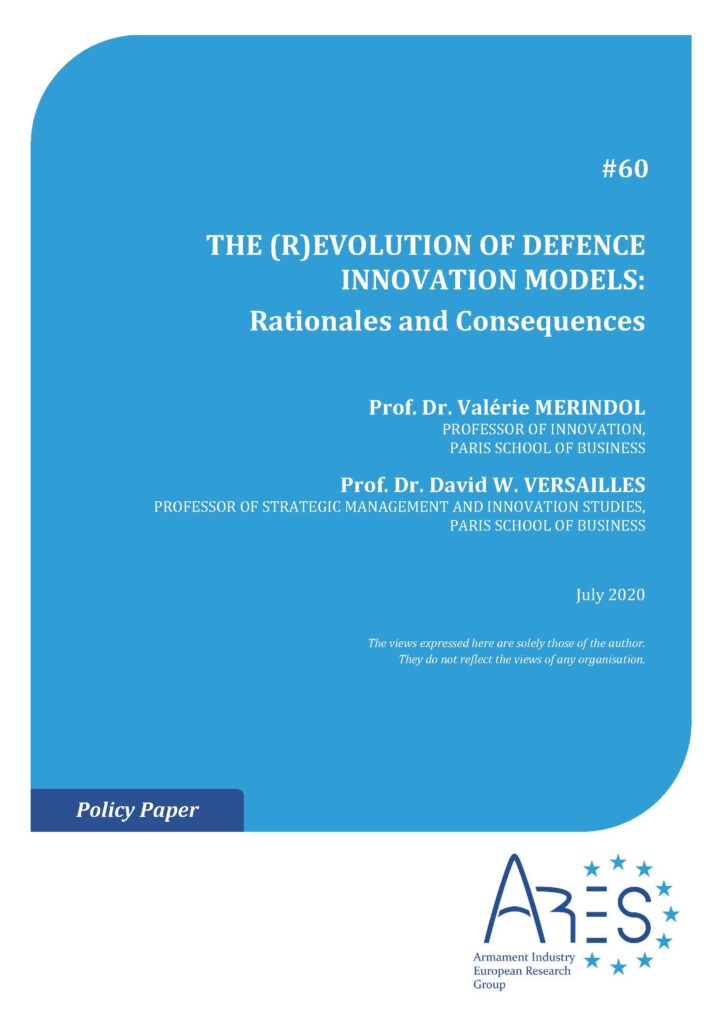Notes / ARES Group - The Armament Industry European Research Group
15 July 2020
The (R)evolution of Defence Innovation Models: Rationales and Consequences

This article investigates recent evolutions in Defence-related innovation management, and its reorganisation towards joint efforts operating user-centric innovation and open innovation rationales in parallel to more traditional perspectives framed by the (top-down) management of technologies.
It is the introductory paper of a series of policy papers which will focus on the way EU Member States have taken into account the necessity to review their defence innovation policy. The future case study articles will also elaborate on the consequences of such changes for procurement policies and for the management of armament programmes.
New mindsets and ways of working are required to generate more agility, more frugality, tighter time frames for the implementation of solutions, and increased cost-effectiveness. War fighters must be present around the table of the management of innovation from the earliest stages of the projects onwards. Open innovation rationales must be introduced to attract talents and expand the boundaries of communities working for Defence. New intermediaries such as corporate incubators, accelerators, innovation hubs become key players in this framework. We do not minimize the disruption incurred by these elements, most notably in the interaction with the industry and with system integrators. However, we promote the idea that thinking in terms of ecosystems is more suitable to this new perspective than the traditional (and closed) approach in terms of Defence industrial base. The article also illustrates these directions with case studies on DARPA, the US DIU program, French military labs, the UK JHub, and the NATO Innovation Hub…


